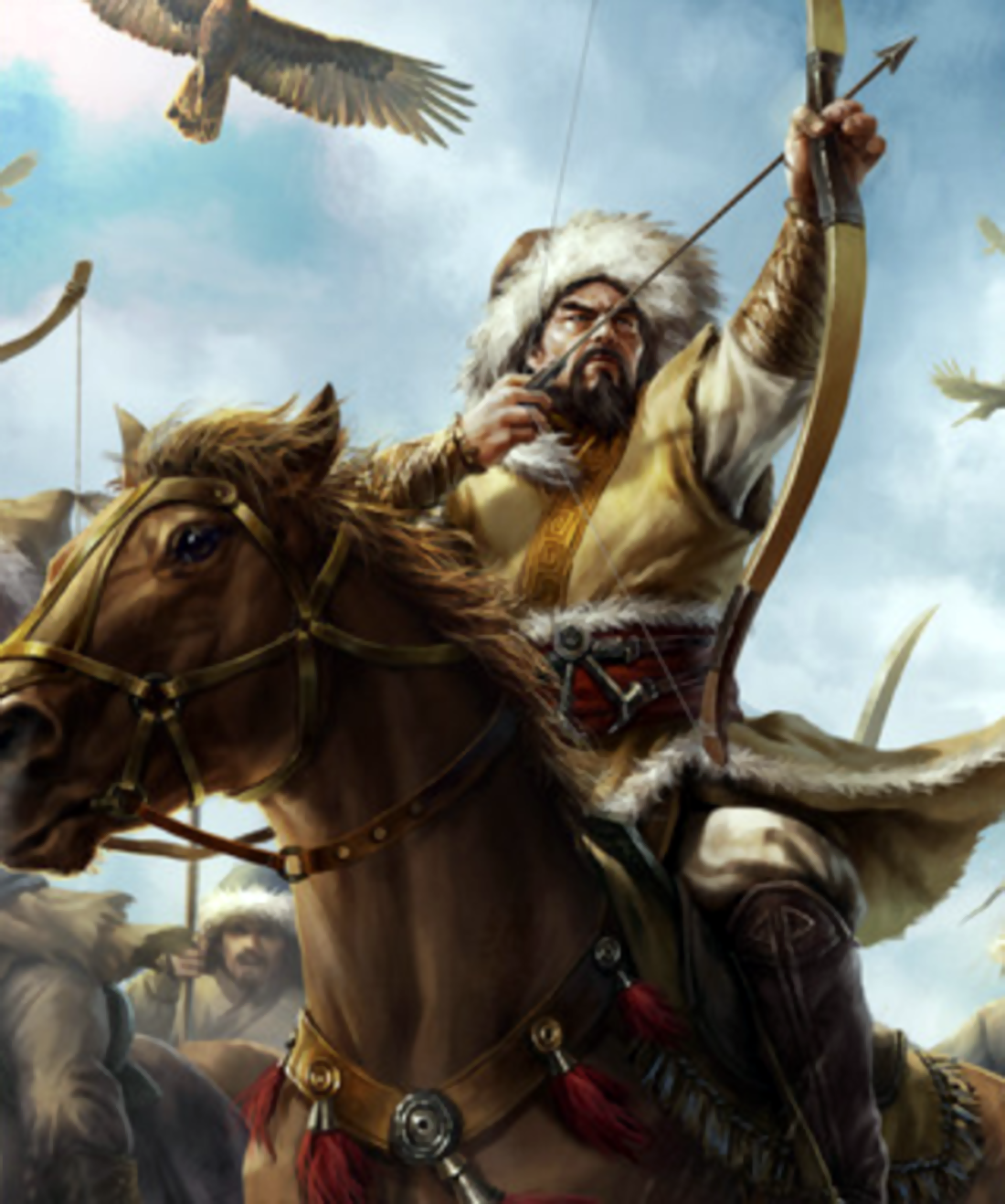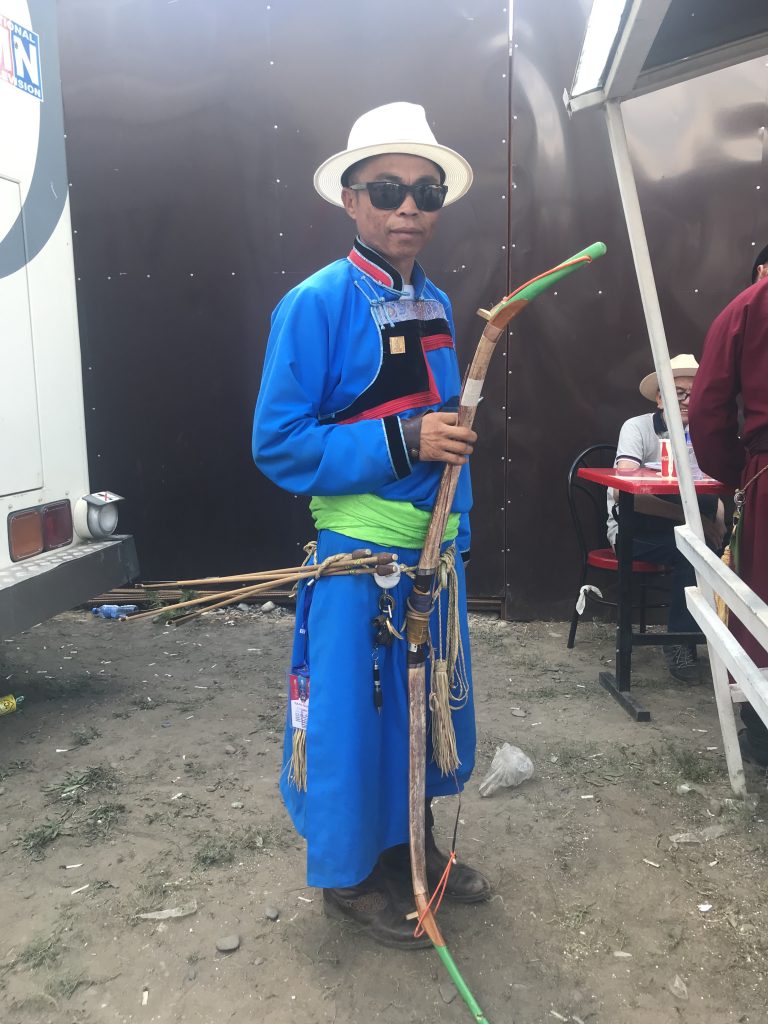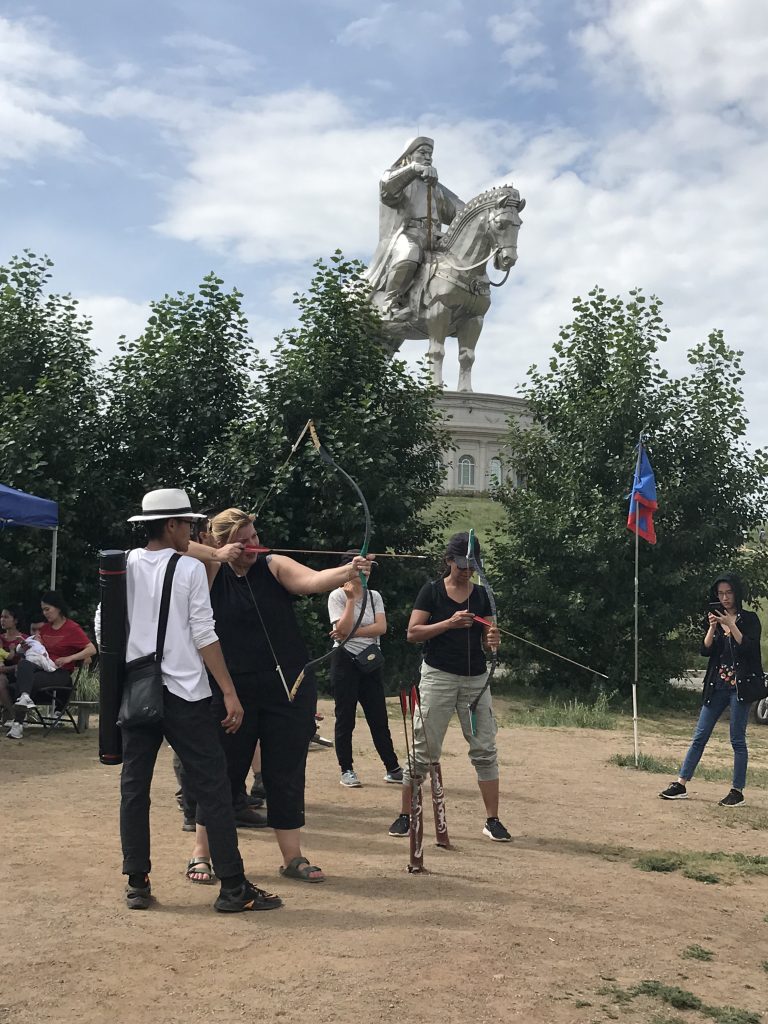YPT recently enjoyed their inaugural Naadam Festival tour, and one of the highlights of said tour was getting to watch Mongolian archery — these historical masters of the bow are truly a sight to behold.
Why is archery such a big deal in Mongolia? Well, basically, because the Mongolian Empire would not have been a thing without out. In the words of Conn Iggulden: “the bow won Genghis his empire”.
Mongolian archery: a brief history of the Mongol bow

Two things made the Mongol bow the last word in 11th-century warfare: the skill of the bowmen and the materials that the bows were made of.
Mongol bows were (and still are) light, sturdy and incredibly strong. Made of a multitude of layers which include wood, horn, sinew and animal glue, they fired further and more accurately than any other bow of their time. Mongolian bows were so powerful that they could puncture through heavy armour and shields at a close enough range, and the Mongols were even known to rout heavy cavalry using nothing but their bows.
The Naadam Festival archery competition

Mongolia has several archery styles, but the one that people win prizes for at the Naadam is Khalh archery, as this is standardised by age and gender (men shoot further than women who shoot further than children).
The other two styles are Uriankhai (30/40-metre shooting for men) and Buriad (30/45-metre shooting with more women than men). These two styles are practised for the first two days of the Naadam, before the more serious business of the Khalh competition begins.
Hasaa!
When you think of an ‘archery competition’, you probably imagine a bullseye. No such thing exists in Mongolian archery; participants instead fire at small leather cylinders – called hasaa – that sit on the ground. In the centre of the stack of hasaa are red hasaa, which act as the ‘bullseye’. Hitting even one red hasaa is good enough to be considered a success – there’s no special high-score hasaa.
Archers have 40 shots, which are split across two stacks of hasaa. The first stack of hasaa is easier to hit than the second, and so the competition quickly becomes a test of who’s the most William-Telly of the archers.
One with nature

“When you are watching Mongolian archery,” claims the pamphlet that I picked up at the competition, “you are also watching the art of communicating with nature”.
A lofty claim, and one that the pamphlet justifies. The bows are made partially out of animal materials, which change their properties depending on the weather. In hot weather they’ll be softer, and in cold weather they’ll be harder and less flexible.
This means that the archer has to be very attuned to his or her bow in order to make their shot. “If archers do not know the ‘character’ of their bow,” states my handy pamphlet, “they will miscalculate nature’s influence on their success.”

Developing a good bowmance is not the only thing archers need to worry about: there’s also that eternal thwarter of shots, the wind. In order to deal with this, archers will routinely mark the back of their hands in order to recalculate their shots. Suck it, Orlando “these trees are old” Bloom.
Can tourists participate in the archery competition?

Funnily enough: yes, they can. You need a real Mongolian bow, to be a member of the National Archery Association, and to be one of the best archers in the country. So functionally no.
Can I at least watch the Naadam archery competition?
Yes, you can! Join YPT next year on our Mongolia Naadam Festival Tour!





